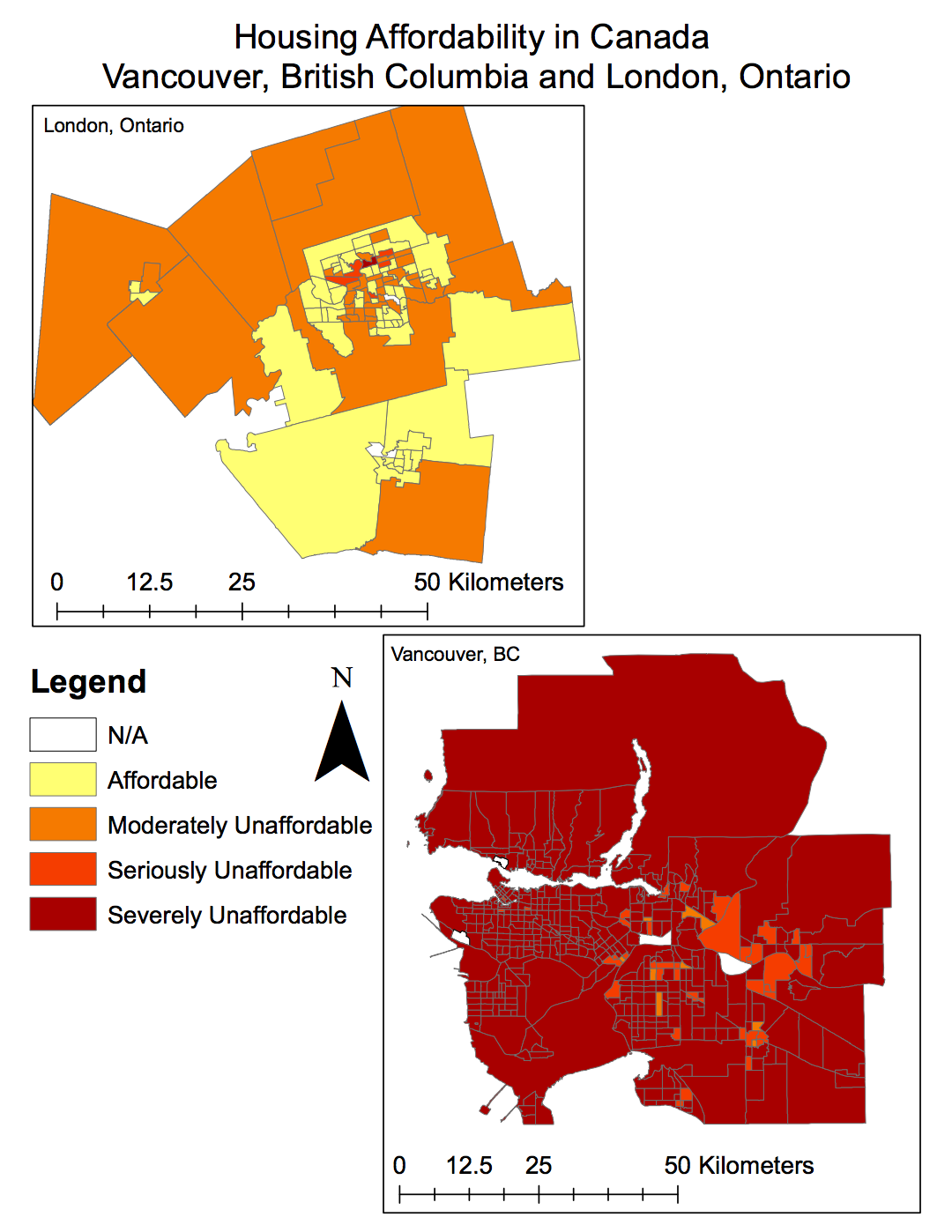
What is affordability measuring, and why is it a better indicator of housing affordability than housing cost alone?
- Affordability measuring is the evaluation of the cost of housing relative to other factors that affect the ability of consumers in the market to access adequate housing. These additional factors may include variables such as (disposable) income, interest rates, mortgage and rent payments, and supply limits.
- Housing cost, measured alone, does not encapsulate any evaluation of the purchasing power of local consumers — or their ability to buy a home. It is simply a metric that describes the cost of a house, without any comparison to the income of local residents; however, this metric is not as meaningful as housing affordability metrics. In other words, if the cost of an average house in a particular market is $350,000, this may seem relatively affordable. However, if the average income in the same market is evaluated to be $30,000, then this variable, in conjunction with the housing market costs, can give a better indication of the market’s housing affordability.
What are the housing affordability rating categories? Who determined them and are they to be ‘trusted’?
The housing affordability rating categories, defined by the Annual Demographia International Housing Affordability Survey, are as follows:
- Affordable (3.0 & Under)
- Moderately Unaffordable (3.1 – 4.0)
- Seriously Unaffordable (4.1 – 5.0)
- Severely Unaffordable (5.1 & Over)
These categories are created by calculating the Median Multiple:
Median Multiple = Median House Price ÷ Gross Annual Mean Household Income
This method of measurement has been approved by the World Bank, the UN, and the Joint Centre for Housing Studies at Harvard University. It is a trustworthy method of evaluation, especially since it can vary regionally by using regional income and housing price metrics.
Is affordability a good indicator of a city’s ‘livability’?
Although (housing) affordability is one indicator of a city’s livability, it cannot encompass all the factors that should be evaluated in determining whether or not a city is livable. Other factors are myriad and include transport services, health services, local systems and infrastructure – including roads, waste management, sewer systems and city planning.
Vancouver can be described as a ‘livable’ city for factors such as its mild climate, adequate public transport systems, health services infrastructure, governance strategies and job market that contribute to a generally positive quality of life. However, if affordability was the only factor analyzed in determining Vancouver’s livability, it may be determined to be seriously lacking at present.
Accomplishment Statement
Through the completion of this lab, I have learned about including officiated indexes (such as the Housing Affordability Index) in my GIS analysis. I have also learned about subtle variations in the ways of displaying data that have significant impact on the appearance of a final map, and may lead users to different conclusions. Through this lab, I continued to develop my knowledge of GIS software, becoming more comfortable with a wider variety of functions.
